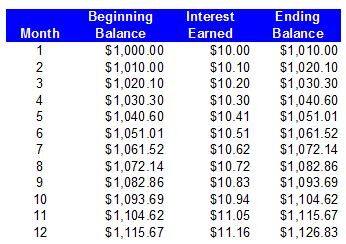What is Annual Percentage Yield (APY)?
Annual percentage yield (APY) is the rate of interest an investor earns in a year after accounting for the effects of compounding. APY is not the same as annual percentage rate (APR). The formula for APY is:
APY = (1 + (i / n))n - 1
Where:
i = the stated annual interest rate
n = the number of compounding periods in one year
How Does Annual Percentage Yield (APY) Work?
For example, let's assume you buy a certificate deposit with a 12% stated annual interest rate. If the bank compounds the interest every month (that is, 12 times per year), then using this information and the formula above, the APY on the CD is:
(1 + (0.12 / 12))12 - 1 = 0.12683 or 12.683%
Let's look at it from another angle. Let's assume you put $1,000 into the 12% CD. Over 12 months, the investment will look like this:

The percentage change from $1,000 to $1,126.83 is ($1,126.83 - $1,000) / $1,000 = 0.12683 or 12.683%. Even though the bank has advertised a 12% interest rate, your money actually grew by 12.683%.
Why Does Annual Percentage Yield (APY) Matter?
APY takes compounding into consideration and is thus almost always higher than the stated annual interest rate. It is a useful tool for evaluating the true return on an investment or the true interest rate paid on a loan.



